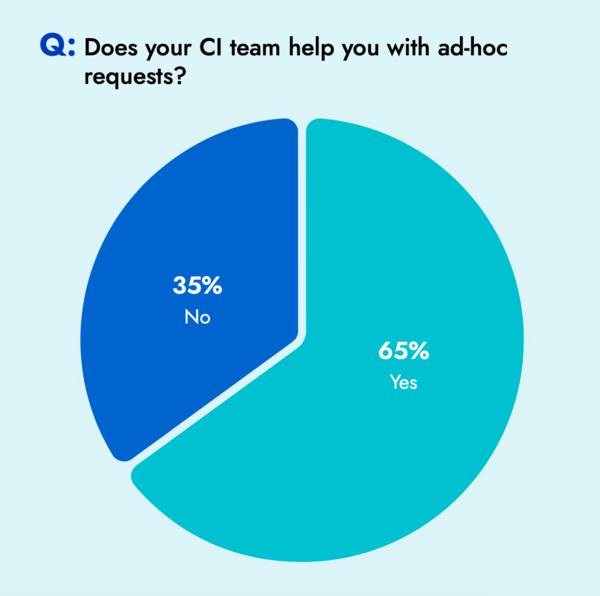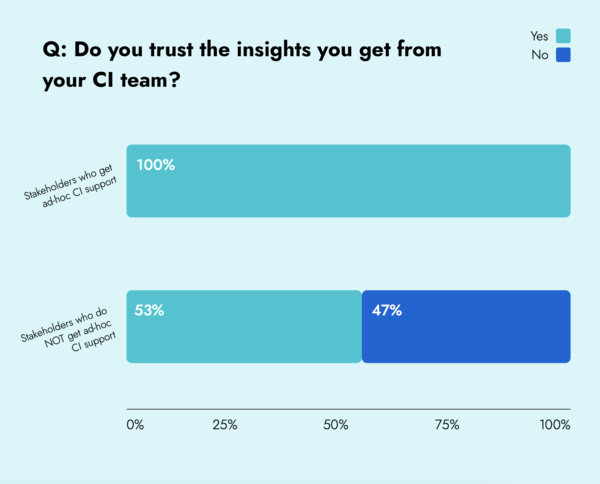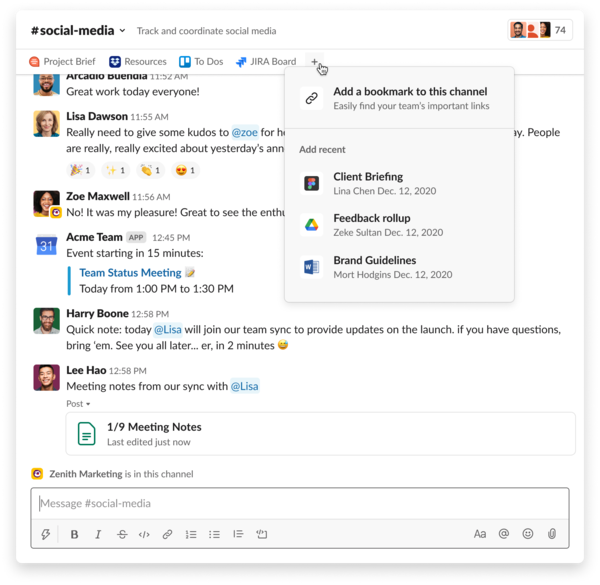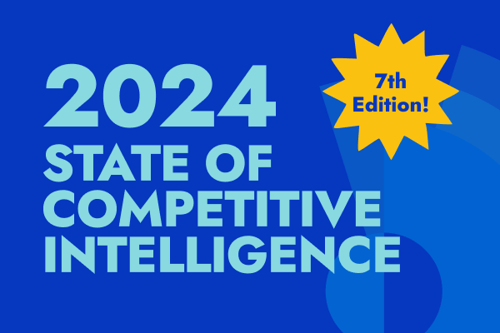Here at Crayon, we recently published the 2023 State of Competitive Intelligence, a benchmark report based on a survey of CI leaders and stakeholders.
“Stakeholders” refers to people who need CI to do their jobs — sellers, for example. One of the questions we asked them was, “Does your CI team help you with ad-hoc requests?”
65% of them said yes:

(Ad-hoc requests, a.k.a. one-off requests, are typically for materials like sales slides, one-pagers, and battlecards.)
The next question we asked: “Do you trust the insights you get from your CI team?” 100% of the stakeholders who get ad-hoc support said yes — compared to only 53% of the stakeholders who do NOT get ad-hoc support.

The takeaway: Your CI program will not reach its potential until you create a system for receiving and responding to ad-hoc requests. Because if there’s one reason CI programs fail, it’s lack of trust.
Obviously, you can’t do everything your stakeholders ask you to do. But here’s the good news: You don’t need to. Half the battle is making people feel heard — positioning yourself as a partner, someone whose door is always open.
So here’s an action item for you: Use Google Forms create a CI request form. The simpler, the better: name, department, request, relevant attachments, deadline. Make it accessible from Slack or Teams so it’s always at your stakeholders’ fingertips. Block time on your calendar once a week to review the latest requests and decide how you’re going to respond to each one.

Slack’s bookmark feature makes it easy to pin your CI request form to relevant channels.
Yes, you must respond to each request — including those for materials that you will not produce. Why? Well, again, people need to feel heard; that’s how you earn trust without overcommitting yourself. But more importantly, by starting a conversation with someone who wants something that you will not produce, you may discover that what they actually need already exists or aligns with another request that you intend to support.
(Someone who wants a battlecard, for example, may get what they actually need from the one-pager you created last month.)
Sellers are particularly prone to wanting one thing when they need something else. Ask questions until you uncover the need underlying the request. You will save time and energy while maximizing the number of stakeholders to whom you deliver value.
Now, here’s the million dollar question: What if you get two valid requests at the same time and neither can be satisfied by existing content? How do you prioritize? Why focus on Request A rather than Request B?
There are a few factors to consider here. First and foremost: company goals. If there’s a huge push at your company to move upstream and Request A is a battlecard for a competitor that sells exclusively to small businesses, prioritize Request B.
Both requests closely aligned with company goals? Consider the seniority of the people who submitted the requests. If your CRO submitted Request A and an account executive submitted Request B, prioritize the former.
Equal seniority? Consider revenue impact. If Request A relates to a competitor that’s in half of your deals and Request B relates to a competitor that’s in a quarter of your deals, prioritize the former.
In the unlikely event that you analyze both requests through all 3 of these filters and it’s still a coin flip, you’ll just have to execute on both as quickly as possible. Not the worst thing in the world — by the time you’re done, you’ll have made a serious impact!
Automated win/loss analysis makes prioritizing easy
Prioritizing requests for CI materials is much easier when you know how much of a threat each competitor poses to your bottom line. That’s why Crayon provides an automated dashboard of real-time win/loss data. All you have to do is take a few minutes to connect our platform to your Salesforce instance. Check out the video below to learn more!

Seeing is believing! Check out Crayon for yourself.
Take a Product TourRelated Blog Posts
Popular Posts
-
 The 8 Free Market Research Tools and Resources You Need to Know
The 8 Free Market Research Tools and Resources You Need to Know
-
 6 Competitive Advantage Examples From the Real World
6 Competitive Advantage Examples From the Real World
-
 How to Create a Competitive Matrix (Step-by-Step Guide With Examples + Free Templates)
How to Create a Competitive Matrix (Step-by-Step Guide With Examples + Free Templates)
-
 24 Questions to Consider for Your Next SWOT Analysis
24 Questions to Consider for Your Next SWOT Analysis
-
 How to Measure Product Launch Success: 12 KPIs You Should Be Tracking
How to Measure Product Launch Success: 12 KPIs You Should Be Tracking


